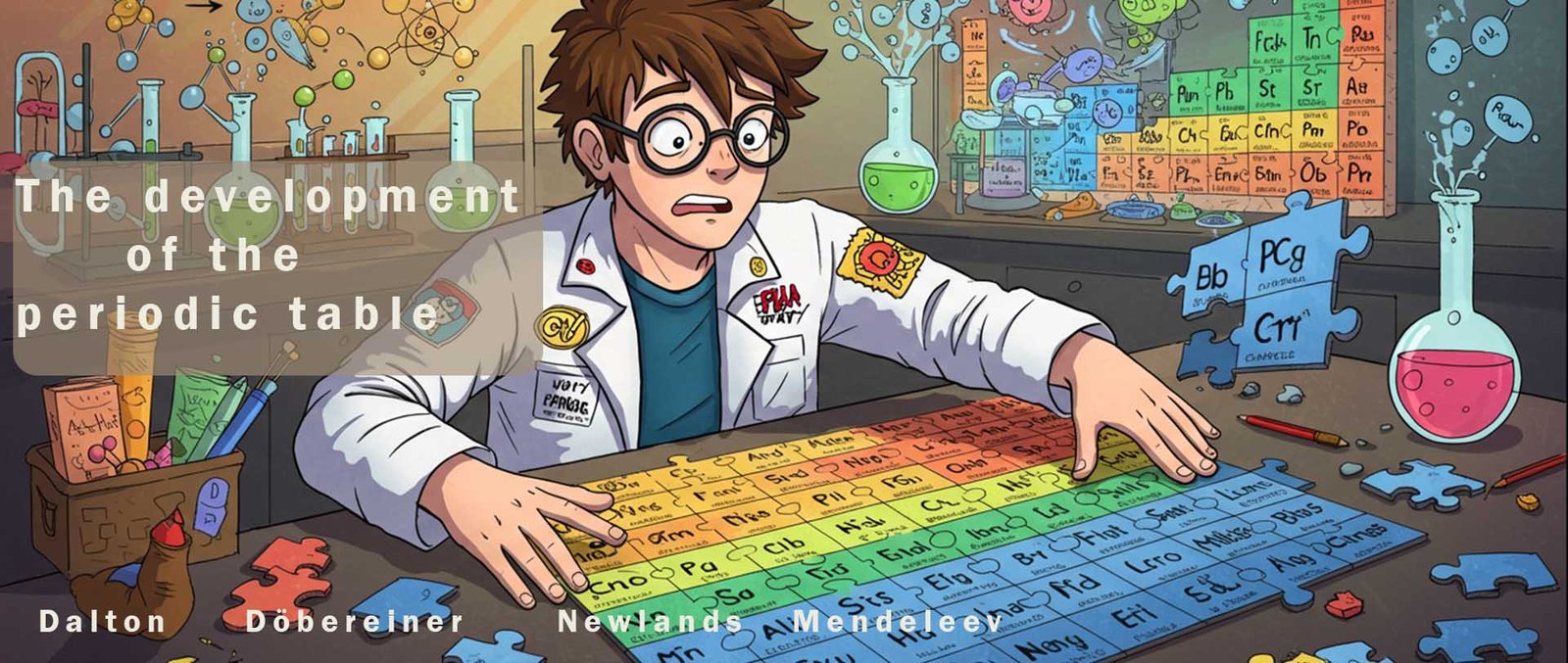
Higher and foundation tiers
The periodic table contains all the elements that have been discovered so far. The periodic table shown below contains all the elements up to element 88, radium. There are 118 known elements but after element 94; Plutonium, these elements are artificial and do not occur naturally.
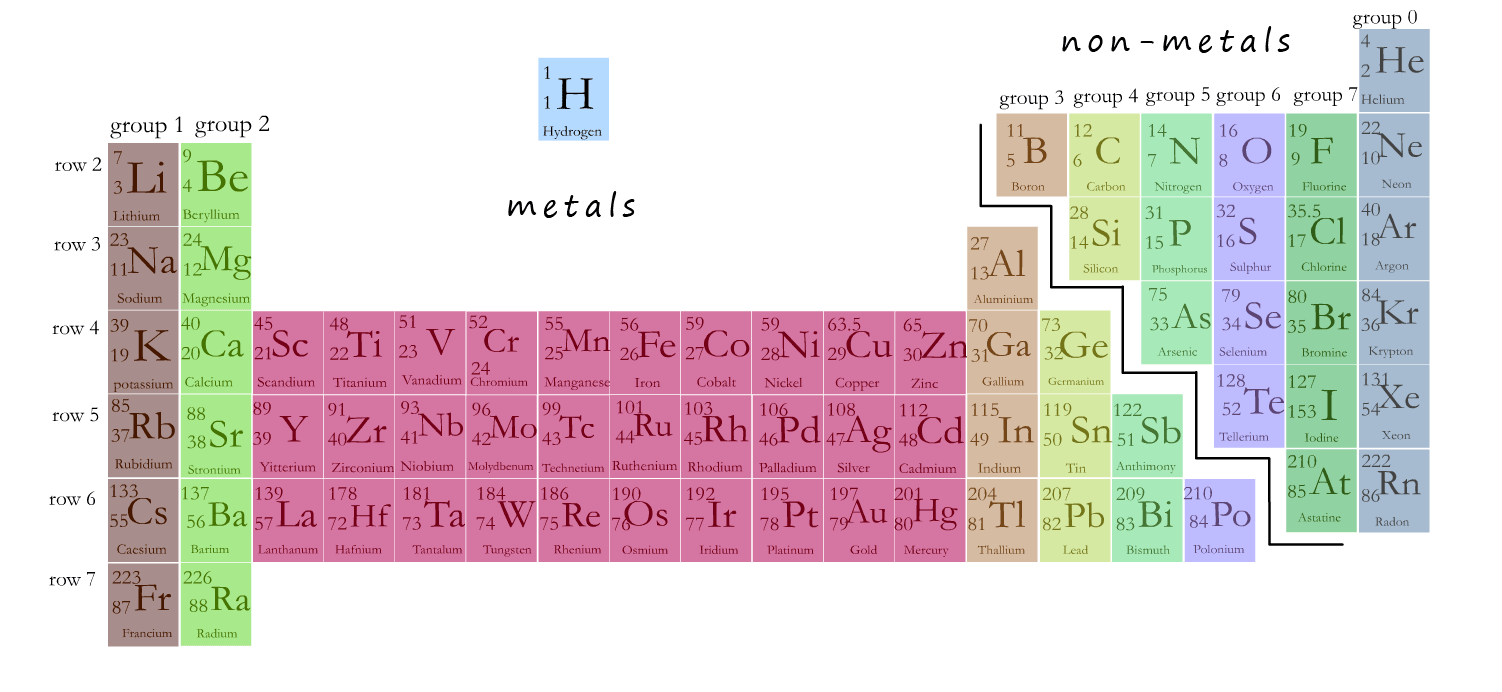
The modern periodic table is of great value to scientists.
The elements are arranged according to
their atomic number and placed into groups according to their chemical
properties and reactions. This enables
scientists to predict and work out how elements will react and behave even if they have never
seen or used these elements before. However it took many years to arrive at this version of the
periodic
table and early periodic tables were very different
to the one we are familiar with today.
You may have wondered why the periodic table is the shape it is,
why not arrange the elements in say
a square, a rectangle or even a circle! Well believe it or not once you get to know your way around
the periodic table you will quickly realise why it is such a great asset to any chemistry student and why
it is set out the way it is.
Imagine for a moment you were starting to build a jigsaw but without a picture of what you are
trying
to build. You might start with all the edge pieces or put all the pieces of say the sky
together or
any pieces of say a building that you thought might be in the jigsaw picture.
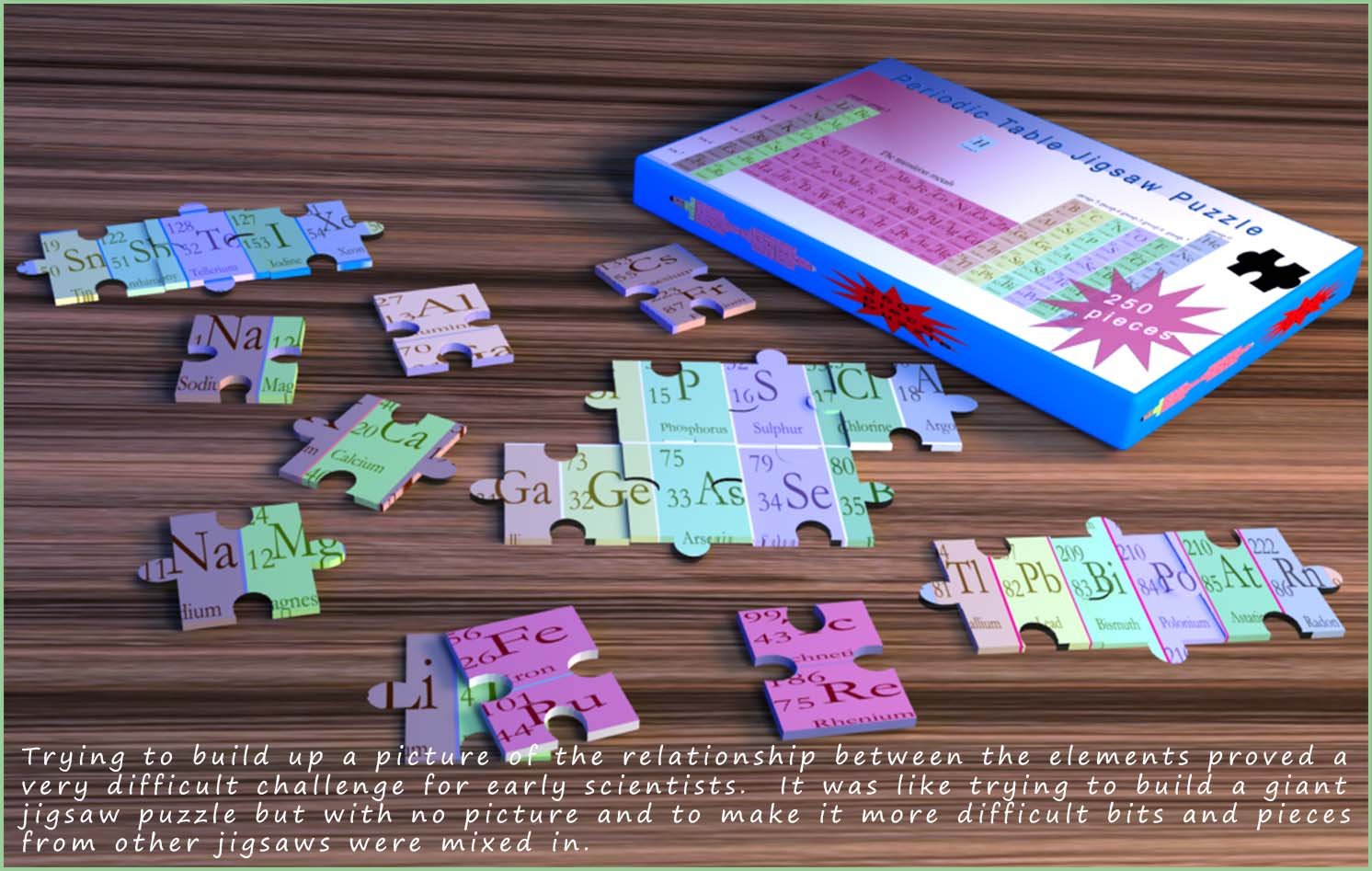
Well when trying to construct the periodic table over 150 years ago scientists faced a similar problem. New elements were being discovered all the time, they had some limited information about these elements; some of which was correct and some incorrect and of course they knew nothing about protons, neutrons or electrons or our ideas about the structure of atoms.
Some of the elements that were put in early versions of the periodic table were in fact compounds and lots of elements still had not been discovered yet. So no wonder it was proving difficult to find any sense or pattern in how the elements reacted and how they might be grouped together in a periodic table. They had to piece all this new information together and try to find any common patterns in how the elements reacted. Like many new ideas they did not always get it right first time! They used the information they had available at the time to build the best models they could, like most scientific ideas as more evidence/information became available their ideas changed.
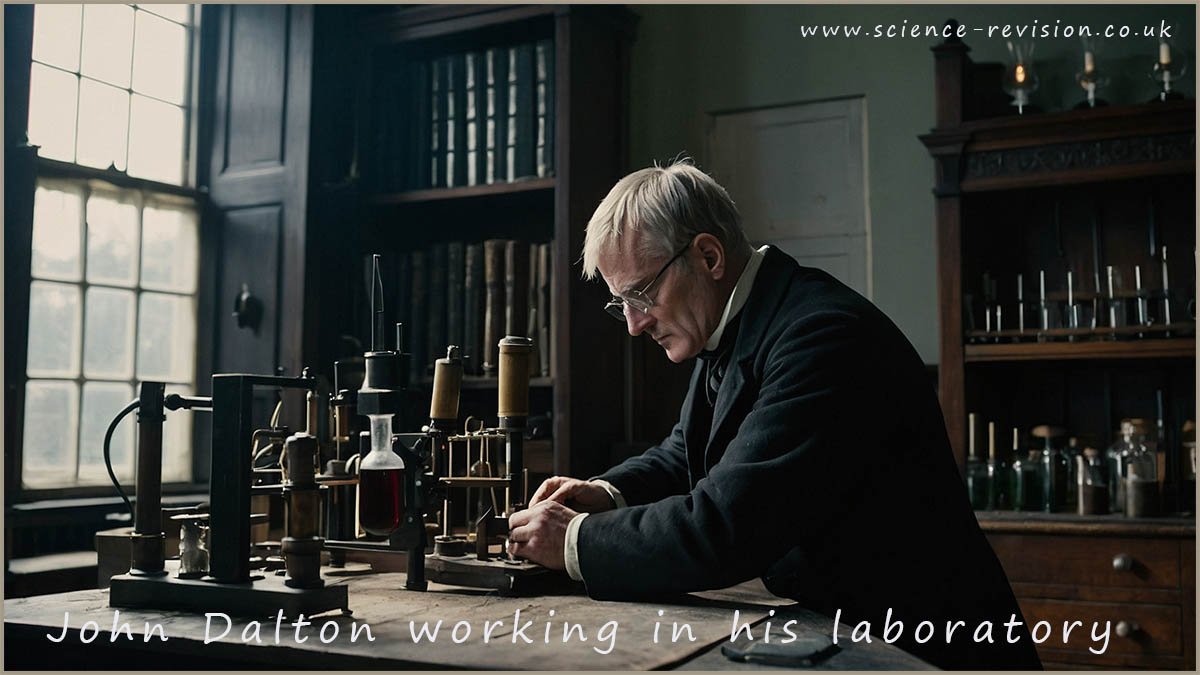
In 1803, John Dalton an English School teacher who was interested in physics, meteorology and chemistry (atomic theory) produced a periodic table of sorts. Dalton's atomic theory which he used to construct his periodic table suggested that:
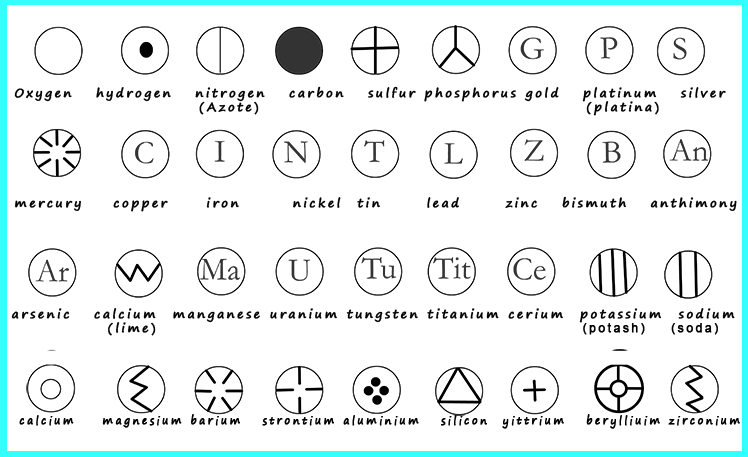
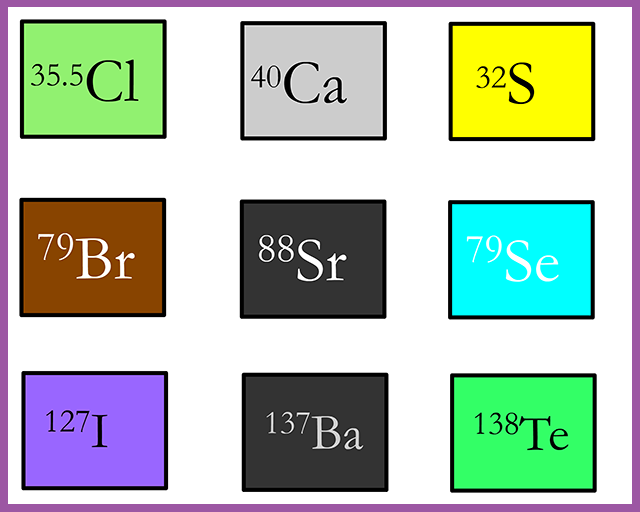 A German chemist named Johann Wolfgang Döbereiner made some interesting observations in 1829
which would help chemists in developing a periodic table; but his ideas were not given enough weight
and dismissed as a curiosity or coincidence. Döbereiner noticed that the properties of bromine
seemed similar to those of chlorine and iodine.
Bromine is a liquid and he placed it between chlorine;
a gas and iodine; a solid. Döbereiner also noticed that the mass of bromine was
approximately half-way
between that of the element above it and the one below
it- chlorine and iodine
A German chemist named Johann Wolfgang Döbereiner made some interesting observations in 1829
which would help chemists in developing a periodic table; but his ideas were not given enough weight
and dismissed as a curiosity or coincidence. Döbereiner noticed that the properties of bromine
seemed similar to those of chlorine and iodine.
Bromine is a liquid and he placed it between chlorine;
a gas and iodine; a solid. Döbereiner also noticed that the mass of bromine was
approximately half-way
between that of the element above it and the one below
it- chlorine and iodine
Döbereiner also noticed similar patterns in the masses of the elements calcium (Ca), Strontium (Sr) and barium (Ba), as well as sulfur (S), selenium (Se) and tellurium (Te). These triads (groups of three elements) together with the atomic masses of the elements should have helped scientists identify patterns in the elements and to construct a periodic table to group them together in some related way.
 In 1864 an English chemist named John Newlands published his periodic table, while it had many limitations it was one of the first attempts at arranging the known elements both in terms of their atomic weights (which we now call relative atomic mass) and their chemical properties, but perhaps the most significant discovery for Newlands was his "Law of Octaves".
In 1864 an English chemist named John Newlands published his periodic table, while it had many limitations it was one of the first attempts at arranging the known elements both in terms of their atomic weights (which we now call relative atomic mass) and their chemical properties, but perhaps the most significant discovery for Newlands was his "Law of Octaves".
Newlands took all the known elements (around 50 in 1865) and arranged them in order of their atomic mass; as shown in his periodic table opposite. He noted that every eighth element had similar chemical properties e.g. starting with hydrogen and counting 8 we come to the element fluorine. The eighth element after fluorine is chlorine and so on.... However his observation that every eighth element had similar chemical properties only worked for the first 20 elements; after that it failed. For example the elements lithium, sodium and potassium all react violently with water but Newlands put the element copper, which does NOT react with water in the same group as these elements.

There were other problems with his periodic table. In places Newlands had more than one element in a box in his periodic table and he put elements like iron in the same group as oxygen and sulfur when these elements have little in common. Newlands grouped these elements together in order to get them to fit his "Law of octaves" even though it was apparent that some elements in his groups were not similar at all, this was one of the main reasons why his periodic table was not immediately accepted by his peers. One of the other big mistakes he made in constructing his periodic table was that he assumed that all the elements had been discovered when in reality new elements were being discovered fairly regularly. His ideas were rejected by his peers and he was even ridiculed by some but his periodic table paved the way for Dmitri Mendeleev and his periodic table.
In 1869 the Russian scientist Dmitri Mendeleev improved on Newlands periodic table. Like Newlands he arranged the elements in order of their atomic masses and grouped elements with similar chemical properties together in their own groups, but unlike Newlands he assumed that there were still elements to be discovered and he left gaps for these undiscovered elements in his table. Not only that, he predicted the properties of some of these as yet undiscovered elements based on their position in his periodic table. When these unknown elements were finally discovered it was found that their properties were very similar to those predicted by Mendeleev.
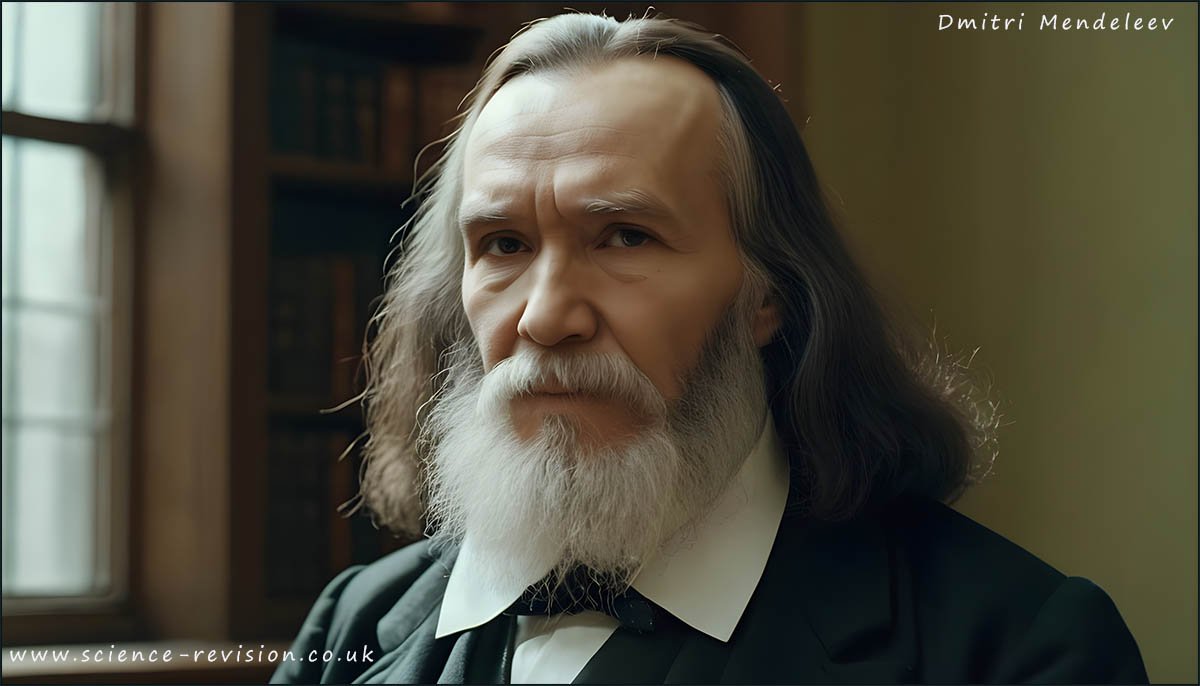
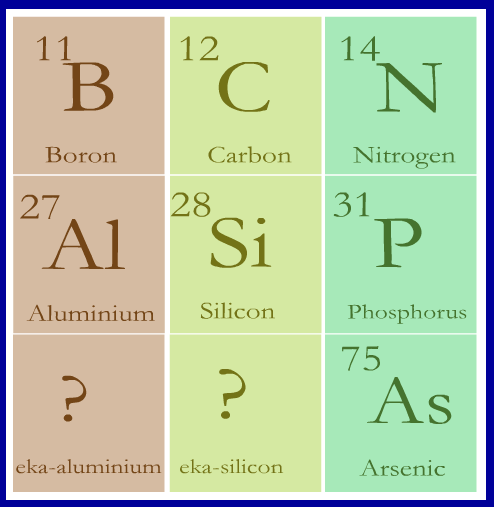
Part of Mendeleev's periodic table is shown opposite. It contains the elements boron (B) and aluminium (Al) in one group with their atomic masses. Underneath aluminium Mendeleev left a gap in his table for an element that he believed was as yet undiscovered. He named this undiscovered element eka-aluminium. Similarly underneath carbon (C) and silicon (Si) was yet another undiscovered element that Mendeleev named eka-silicon. In 1875 the element gallium (Mendeleev's eka-aluminium) was discovered and in 1886 the element germanium (Mendeleev's eka-silicon) was discovered. These two new elements had chemical properties and physical properties that were very close to Mendeleev's predicted properties. This suggested that Mendeleev's hypothesis and ideas on the structure of the periodic table were probably correct.
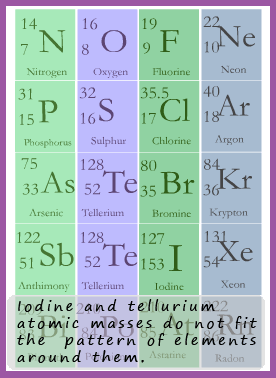
It was not until much later following the work of scientists such Rutherford and Henry Moseley that the idea of atomic number instead of atomic mass as a way of arranging the elements that anomalies like the tellurium/iodine one were eventually solved. The modern periodic table we use today sorts the elements according to their atomic number and not their atomic mass.